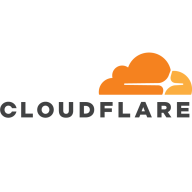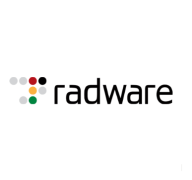


Prolexic and Radware DDoS compete in the field of DDoS mitigation. Radware DDoS has a feature advantage, making it potentially superior despite differences in cost.
Features: Prolexic provides robust network and data center protection, enhanced by comprehensive visibility and analytics, aiding in informed decision-making during attacks. Its PLXRoute feature ensures on-demand DDoS protection with minimal technical interaction. Alternatively, Radware DDoS is known for advanced threat detection and automatic attack mitigation, offering real-time protection facilitated by seamless integration with Firepower. Its DefensePro module provides multi-layered DDoS protection and exceptional threat visibility.
Room for Improvement: Prolexic could enhance automation features to improve efficiency, expand on adaptive defense mechanisms, and reduce the complexity of initial setup. Radware DDoS might improve by simplifying configuration processes, enhancing user interface intuitiveness, and streamlining cloud integration options for better accessibility.
Ease of Deployment and Customer Service: Prolexic offers a straightforward deployment process with extensive customer support, making it reliable and stable. Radware DDoS emphasizes a cloud-based, quick-start deployment model with robust support offerings, noted for flexibility and adaptability across diverse environments.
Pricing and ROI: Prolexic generally involves higher setup costs but delivers competitive ROI in long-term scenarios due to its effectiveness. Radware DDoS, while potentially more expensive upfront, is valued for rapid integration and cost-efficiency in threat mitigation, leading to a compelling ROI. Its pricing reflects the specialized capabilities offered in high-threat environments.
| Product | Market Share (%) |
|---|---|
| Cloudflare | 18.8% |
| Radware DDoS | 8.5% |
| Prolexic | 3.5% |
| Other | 69.2% |



| Company Size | Count |
|---|---|
| Small Business | 45 |
| Midsize Enterprise | 8 |
| Large Enterprise | 25 |
| Company Size | Count |
|---|---|
| Small Business | 18 |
| Midsize Enterprise | 10 |
| Large Enterprise | 18 |
Cloudflare is a highly-regarded Content Delivery Network (CDN) and a Distributed Denial-of-Service (DDoS) protection solution. The robust global connectivity cloud platform that is Cloudflare ensures users are able to connect to the Internet quickly, securely, and reliably. Cloudflare is one of the world's largest networks in the marketplace today. Using Cloudflare, businesses, educational entities, NGOs, vloggers, bloggers, and anyone else with an internet presence can experience more secure, faster websites and applications.
Currently, there are millions of Internet locations on Cloudflare, and the Cloudflare network
continues to grow every day by the thousands. The solution is able to fulfill the requests for
millions of websites seamlessly and serves on average 45 million HTTP requests per second.
Cloudflare has safe, secure data centers in close to 300 cities worldwide to ensure every
client request is filled as quickly as possible. It is Cloudflare’s edge network that makes this
possible by keeping content and other services as close to each client as possible, so the
information requests are always only seconds away.
Many organizations that work in democracy, civil society, human rights, or the arts are able to
access Cloudflare's highest levels of protection for free via Project Galileo. Additionally, official
election websites can be secured from hacking and fraud through Cloudflare’s Project
Athenian, also at no additional cost.
Cloudflare can also help organizations of all sizes develop a robust zero-trust strategy to
ensure the highest levels of productivity and profitability. Employees, stakeholders, and end users have a greater level of satisfaction and overall improved user experience, which can, in
turn, result in higher revenues and overall ROI. Zero-trust and BYOD (bring your own device)
access ensure end users and employees always have the best resources and technology
available to them at all times.
Cloudflare benefits
Cloudflare has many benefits. Some of its most valuable benefits include:
- Faster load times
- Robust DNS security
- Intuitive cloud Web Application Firewall (WAF)
- Free universal SSL
- Image enhancement
- Automatic browser caching
- Next-generation cloud load balancer
- Accelerated Mobile Pages (AMP)
- Rate limiting
- Minification
- Zero-trust capabilities
- Cost-effective
- Reduced carbon footprint
Reviews from real users
“Many websites require an SSL certificate because they sell stuff and want SSL. Cloudflare
comes with an SSL certificate built in. It's automatic. You sign yourself up for Cloudflare, and
an SSL certificate automatically protects your website. If you have a connection between your
website and your host, the server, Cloudflare, and the host, you don't necessarily need a
certificate.” Spencer M., Owner at Tech Exchange
“What I like best about Cloudflare is that my company can use it to trace and manage
applications and monitor traffic. The solution tells you if there's a spike in traffic. Cloudflare
also sends you a link to check your equipment and deployment and track it through peering,
so it's a valuable tool.” Daniel P., Network Engineer at Ufinet
“The most valuable feature of Cloudflare is the GUI. You are able to control the solution very
well through the interface. There is a lot of functionality that is embedded in the service.” PeerSpot user, Competence Center Manager at a tech services company
Akamai Prolexic is a cloud-based DDoS protection solution that defends your data center and hybrid infrastructure to ensure availability and uptime. It provides comprehensive port and protocol protection against the broadest range of DDoS attacks, including high-bandwidth sustained attacks and complex multi-vector attacks. Prolexic is available as an always-on or on-demand service, contains a Network Cloud Firewall, and offers flexible integration models based on your desired security posture across hybrid origins. Prolexic is backed by a proven platform with more than 20 Tbps of dedicated DDoS defense capacity and our 24/7/365 global SOCC for a fully managed solution.
Prolexic stops DDoS attacks closer to the source to maximize performance for users and to maintain network resiliency through cloud distribution. Instead of originating advertisements for your prefixes from your cloud/data centers, you’ll make either a border gateway protocol route advertisement change or DNS redirection (A record or CNAME record) to originate from one of many Akamai scrubbing centers globally. Your intended traffic is then routed to the user via Anycast through the closest scrubbing center. Prolexic will inspect the traffic to determine if it is good or bad, and apply proactive and/or custom mitigation controls designed to stop attacks instantly if needed. This ensures fast and accurate DDoS protection. Clean traffic is then returned to the customer origin via GRE tunnels, Layer 2 VLAN connections, and/or VIP-to-origin back-end mapping with little perceived latency. Prolexic also features a Network Cloud Firewall that allows IT teams to auto generate or manually manage access control lists.
Radware DDoS provides robust multi-layer protection against distributed denial of service attacks, featuring real-time monitoring and anomaly detection. Its scalable cloud-based and on-site deployment options ensure effective safeguarding of critical infrastructure.
Offering comprehensive defense, Radware DDoS includes features like data scrubbing, signature updates, and SSL-based mitigation. Integrated platforms and a user-friendly interface streamline its deployment. With advanced reporting, analytics, and behavioral analysis powered by machine learning, users experience fewer false positives. Despite these strengths, users highlight the need for improved scalability, seamless deployment, and enhanced machine learning capabilities. Better documentation, pricing, and customer service remain areas of improvement.
What features does Radware DDoS offer?In industries like banking, telecom, and government, organizations employ Radware DDoS to protect networks from DDoS attacks. It ensures server, web service, and mail security while enabling traffic monitoring and unauthorized access blocking. Its cloud-based options serve entities seeking infrastructure security and network traffic analysis.
We monitor all Distributed Denial-of-Service (DDoS) Protection reviews to prevent fraudulent reviews and keep review quality high. We do not post reviews by company employees or direct competitors. We validate each review for authenticity via cross-reference with LinkedIn, and personal follow-up with the reviewer when necessary.